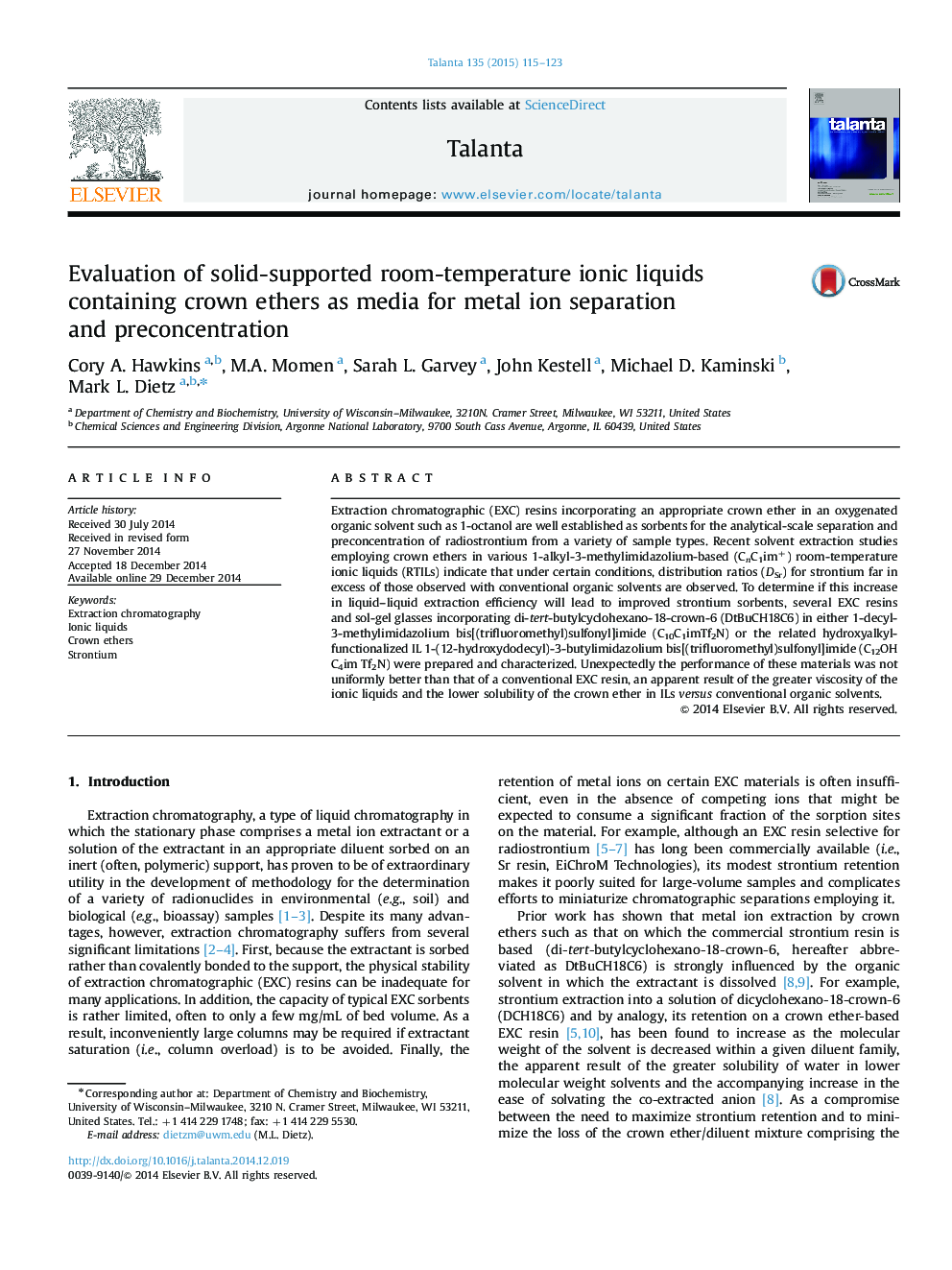| Article ID | Journal | Published Year | Pages | File Type |
|---|---|---|---|---|
| 1241967 | Talanta | 2015 | 9 Pages |
•Two types of solid-supported ionic liquid (IL)-crown ether (CE) mixtures were prepared.•Transfer of solvent extraction data for IL-CEs to a solid support is not straightforward.•High IL viscosity and inadequate crown ether solubility complicate this transfer.•Strontium sorbents based on n-alcohol-CE mixtures unexpectedly yield superior results.
Extraction chromatographic (EXC) resins incorporating an appropriate crown ether in an oxygenated organic solvent such as 1-octanol are well established as sorbents for the analytical-scale separation and preconcentration of radiostrontium from a variety of sample types. Recent solvent extraction studies employing crown ethers in various 1-alkyl-3-methylimidazolium-based (CnC1im+) room-temperature ionic liquids (RTILs) indicate that under certain conditions, distribution ratios (DSr) for strontium far in excess of those observed with conventional organic solvents are observed. To determine if this increase in liquid–liquid extraction efficiency will lead to improved strontium sorbents, several EXC resins and sol-gel glasses incorporating di-tert-butylcyclohexano-18-crown-6 (DtBuCH18C6) in either 1-decyl-3-methylimidazolium bis[(trifluoromethyl)sulfonyl]imide (C10C1imTf2N) or the related hydroxyalkyl-functionalized IL 1-(12-hydroxydodecyl)-3-butylimidazolium bis[(trifluoromethyl)sulfonyl]imide (C12OHC4im Tf2N) were prepared and characterized. Unexpectedly the performance of these materials was not uniformly better than that of a conventional EXC resin, an apparent result of the greater viscosity of the ionic liquids and the lower solubility of the crown ether in ILs versus conventional organic solvents.
Graphical abstractFigure optionsDownload full-size imageDownload as PowerPoint slide
